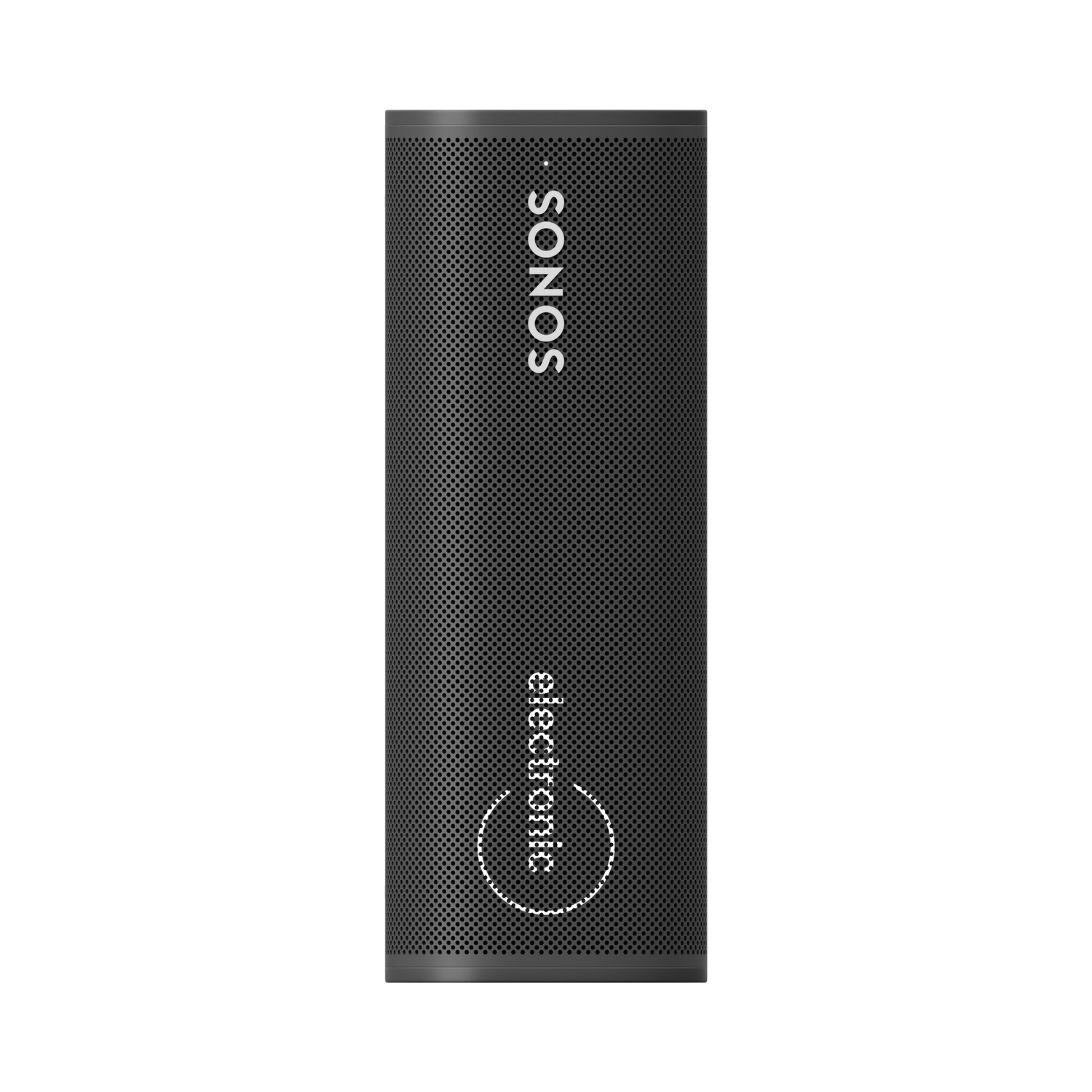The Evolution of Quality Control Systems
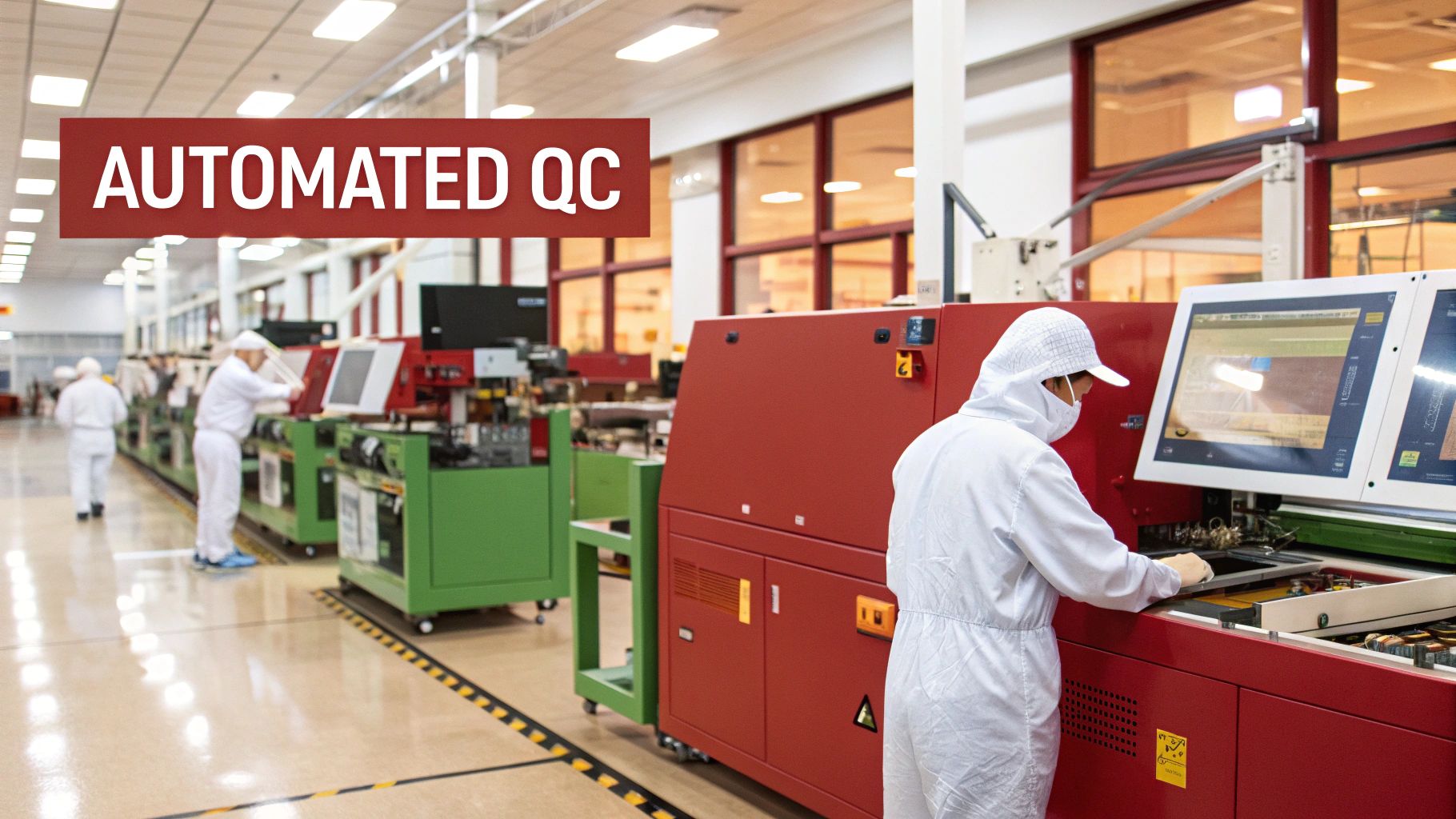
Quality control in electronics manufacturing has changed dramatically. Early methods often relied on inspection after production. This meant finding defects only after products were finished, leading to expensive rework, wasted materials, and potential brand damage. This reactive approach has given way to a more proactive and integrated system.
This change is driven by the growing complexity of electronics and the demand for better reliability. Think about the intricate circuits in a modern smartphone versus a simple transistor radio. This complexity requires a more advanced quality control approach, addressing potential problems throughout the product's lifecycle.
From Inspection to Prevention
The modern approach to quality control in electronics manufacturing focuses on prevention, not just detection. For instance, instead of inspecting finished circuit boards for soldering problems, manufacturers now use process controls to ensure correct soldering techniques from the start. This includes factors like temperature control, solder composition, and operator training.
This proactive approach minimizes defects, reduces waste, and improves efficiency. Real-time monitoring and data analysis allow for immediate production adjustments, further improving quality control.
The Rise of Integrated Systems
Another key advancement is integrating quality control systems across all manufacturing stages. Quality is no longer the sole responsibility of a dedicated quality control department. It's now part of every step, from design and procurement to production and final testing.
This integrated approach builds a culture of quality where every employee is responsible for maintaining standards. This minimizes errors and ensures consistent product quality. Integrating quality control data with other business systems, like Enterprise Resource Planning (ERP) and Supply Chain Management (SCM), provides a complete view of operations, leading to better decisions and continuous improvement.
The Impact of Comprehensive Quality Control
The advantages of a comprehensive quality control system are significant. A study by the American Society for Quality (ASQ) found that electronics manufacturers using these systems saw a 37% reduction in defect rates and a 29% improvement in overall operational efficiency. Learn more about the impact of quality control systems here.
This translates to lower production costs, higher customer satisfaction, and a stronger competitive edge. This shift toward proactive, integrated quality control isn't just a trend; it's essential for survival in today's competitive electronics manufacturing market.
As technology advances, the demands for quality and reliability will only grow, making strong quality control systems even more crucial for success. This requires continuous investment in new technologies, training, and process improvements to maintain high quality and meet changing customer needs.
Game-Changing Quality Control Methodologies
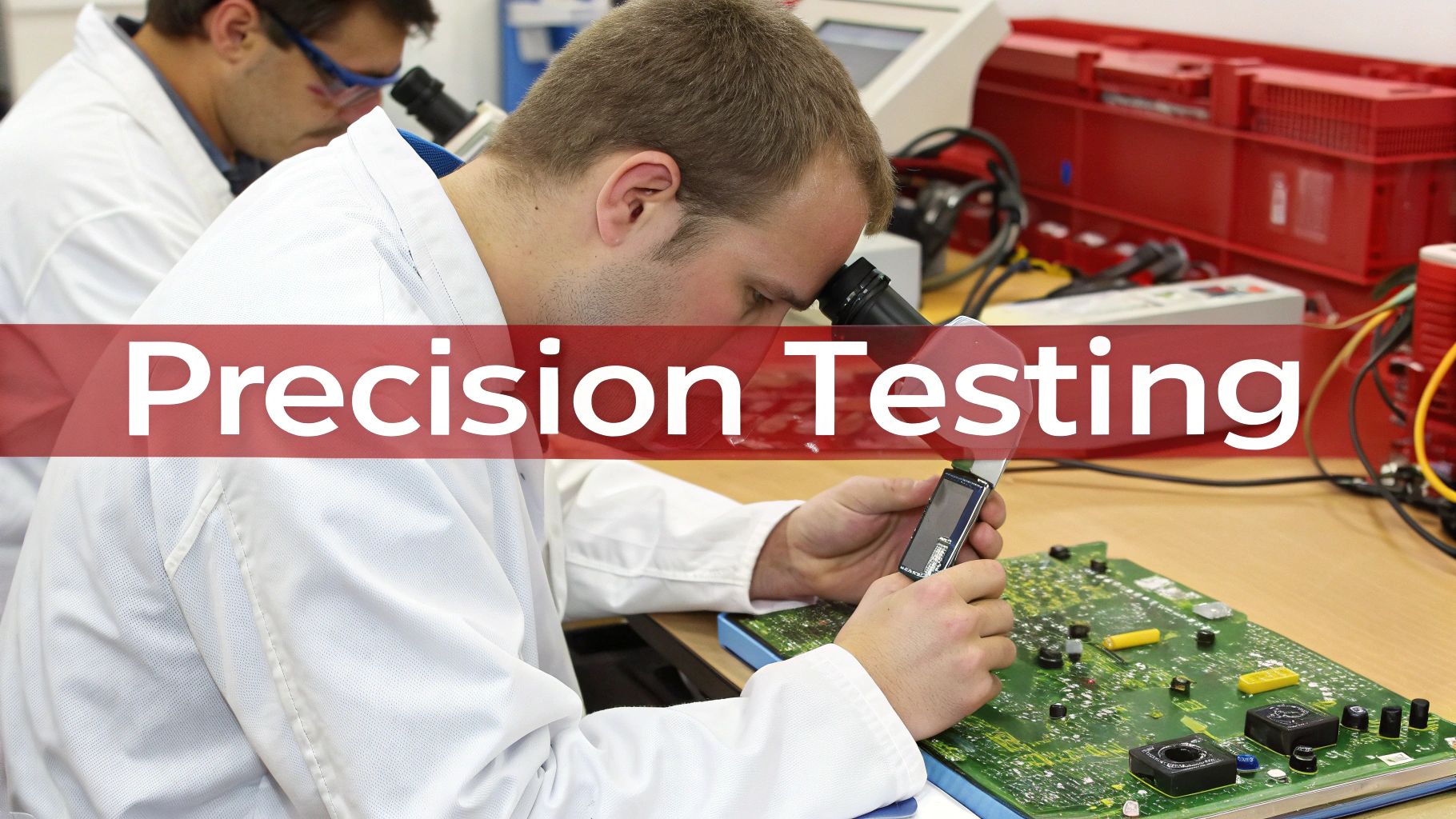
Beyond the basics of quality control, several key methodologies are reshaping electronics manufacturing. These powerful strategies help manufacturers achieve remarkable levels of quality and efficiency. Let's explore how Statistical Process Control (SPC), Six Sigma, and Lean Manufacturing are applied in practice.
Statistical Process Control (SPC)
SPC uses statistical methods to monitor and control manufacturing processes. This allows for the identification of variations and trends that could signal potential quality issues.
Imagine tracking the temperature of a soldering process. SPC can reveal small temperature fluctuations that, if ignored, might lead to faulty connections. By catching these deviations early, manufacturers can intervene and prevent defects. This proactive approach minimizes waste and ensures consistent quality.
Six Sigma
Six Sigma is a data-driven approach that aims to eliminate defects and reduce variability in any process. The core goal is to achieve a mere 3.4 defects per million opportunities.
This rigorous methodology follows a structured approach known as DMAIC: Define, Measure, Analyze, Improve, and Control. In electronics manufacturing, Six Sigma can optimize production lines, reduce material waste, and improve testing accuracy. This all contributes to better product quality and reliability.
Lean Manufacturing
Lean manufacturing focuses on eliminating waste throughout the entire production process. It targets any step that doesn't add value to the final product.
This might include unnecessary material movement, excess inventory, or redundant testing. By streamlining operations, lean manufacturing enhances efficiency, lowers costs, and reduces lead times without compromising quality. For a deeper dive, check out this resource: How to master lean principles.
Combining Methodologies for Maximum Impact
These methodologies work well independently but are even more powerful when combined. Lean manufacturing can create a stable base for implementing Six Sigma. Integrating SPC adds real-time monitoring and data-driven decision-making.
This synergistic approach maximizes the impact of quality control. Research from the Institute of Electrical and Electronics Engineers (IEEE) suggests that automated optical inspection (AOI) systems can detect up to 90% of surface-mount technology defects, significantly outperforming manual inspections. Learn more here.
To illustrate the differences between these methodologies, consider the following table:
Comparison of Quality Control Methods
This table compares the effectiveness, cost, and implementation complexity of different quality control methodologies in electronics manufacturing.
| Method | Defect Detection Rate | Implementation Cost | Complexity | Best For |
|---|---|---|---|---|
| Statistical Process Control (SPC) | Moderate (Identifies trends) | Low | Low | Ongoing process monitoring and early problem detection |
| Six Sigma | High (Targets 3.4 defects per million) | High | High | Reducing defects and minimizing variation |
| Lean Manufacturing | Moderate (Reduces defects through waste elimination) | Moderate | Moderate | Improving efficiency and streamlining processes |
| Combined Approach (Lean + Six Sigma + SPC) | Very High (Combines strengths of each method) | High | High | Comprehensive quality management system |
As the table shows, each method has its strengths and weaknesses. Choosing the right method, or combination of methods, depends on the specific needs and resources of the manufacturer.
Adapting Frameworks to Real-World Challenges
Successful implementation requires tailoring these frameworks to each manufacturing environment. Factors such as production volume, product complexity, and available resources all influence the best approach. Companies must be willing to adapt and adjust their strategies over time. This journey of continuous improvement demands both understanding the methodologies and the flexibility to apply them effectively.
Automated Testing That Actually Delivers Results
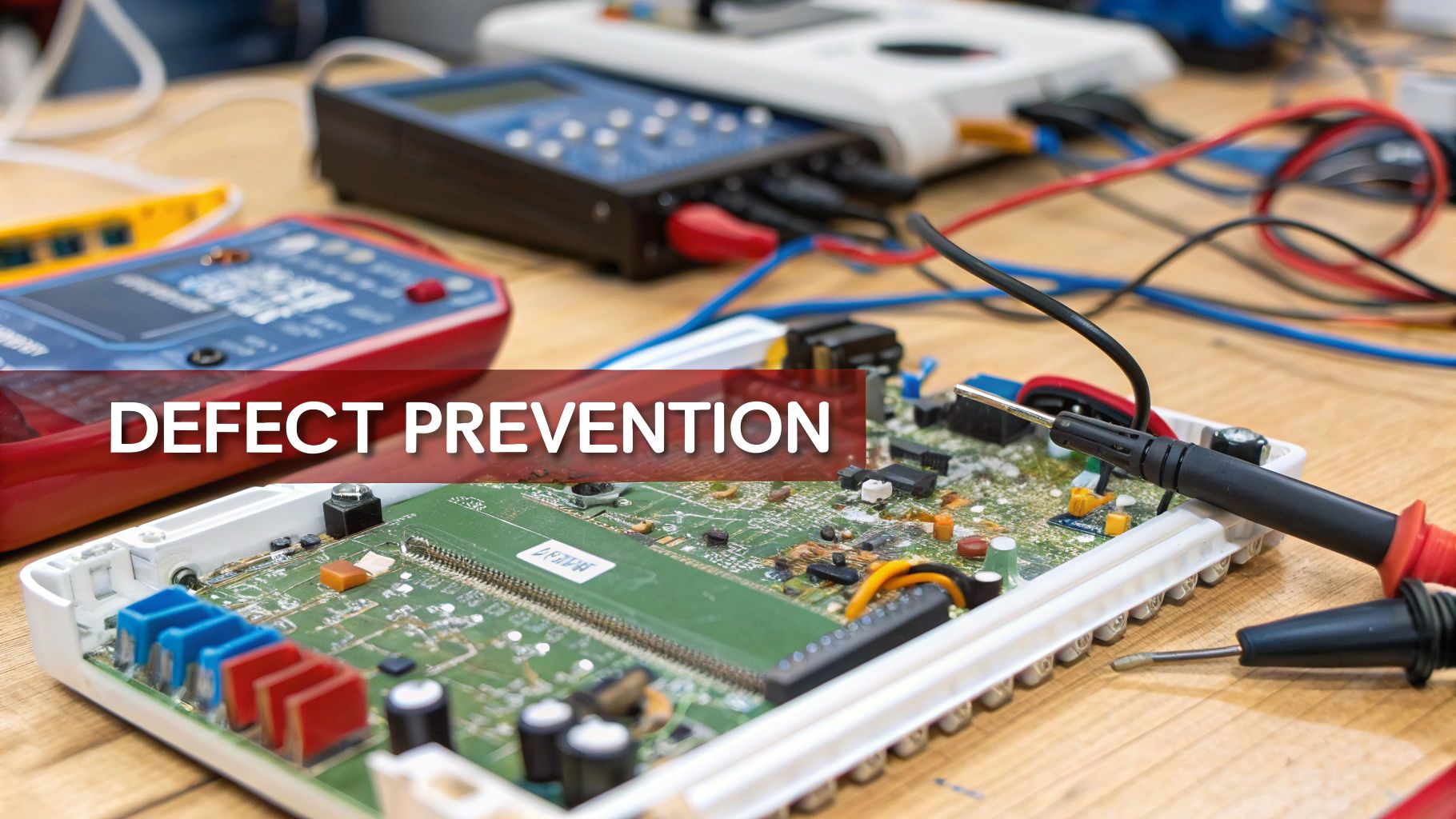
Automated testing offers significant advantages for electronics manufacturers. However, simply purchasing automated systems isn't enough. True success requires a strategic approach, aligning automation with your overall quality goals. This involves carefully choosing which tests to automate, selecting appropriate tools, and seamlessly integrating these systems into your production line.
Identifying Opportunities for Automation
Not all tests are good candidates for automation. The biggest improvements come from automating repetitive, high-volume tests. Some prime examples include in-circuit testing (ICT), functional testing, and burn-in testing. Automating these tasks frees up valuable human resources for more complex, analytical work and eliminates human error in repetitive operations. This results in greater consistency and higher throughput.
Selecting the Right Automation Tools
Choosing the right automation tools is critical to success. Consider factors like the types of tests needed, the complexity of the electronics you manufacture, and how well the tools integrate with your existing systems. There isn’t a single solution that works for everyone; different manufacturers need different tools. For instance, a company producing complex printed circuit boards (PCBs) might require sophisticated Automated Optical Inspection (AOI) systems. A manufacturer of simpler components might benefit from more basic Automated Test Equipment (ATE).
Seamless Integration for Maximum Impact
Automated testing systems must be smoothly integrated into the production process. This requires careful planning and collaboration between various departments, including engineering, production, and quality control. Integration needs to address data flow, material handling, and operator training. It's like a carefully choreographed dance between machines and people. Successful integration leads to efficient, high-quality output. Conversely, poor integration can disrupt operations and negate the benefits of automation.
Realizing the ROI of Automated Testing
The return on investment (ROI) of automated testing can be substantial, but it requires careful management. You need to balance the initial investment in equipment and software with the long-term benefits of fewer defects, increased throughput, and improved consistency. A joint study by Manufacturing Technology Insights and Quality Magazine revealed that electronics manufacturers who invested in advanced automated testing systems experienced a return on investment within 18 months and a 43% reduction in product returns. Find more detailed statistics here. This demonstrates the transformative potential of automation in quality control. However, achieving this ROI depends on a strategic approach. Focus on selecting the right technologies and seamlessly integrating them into your production environment. This long-term commitment to quality improvement pays dividends in increased customer satisfaction and higher profitability.
Navigating Quality Standards Without Losing Your Mind
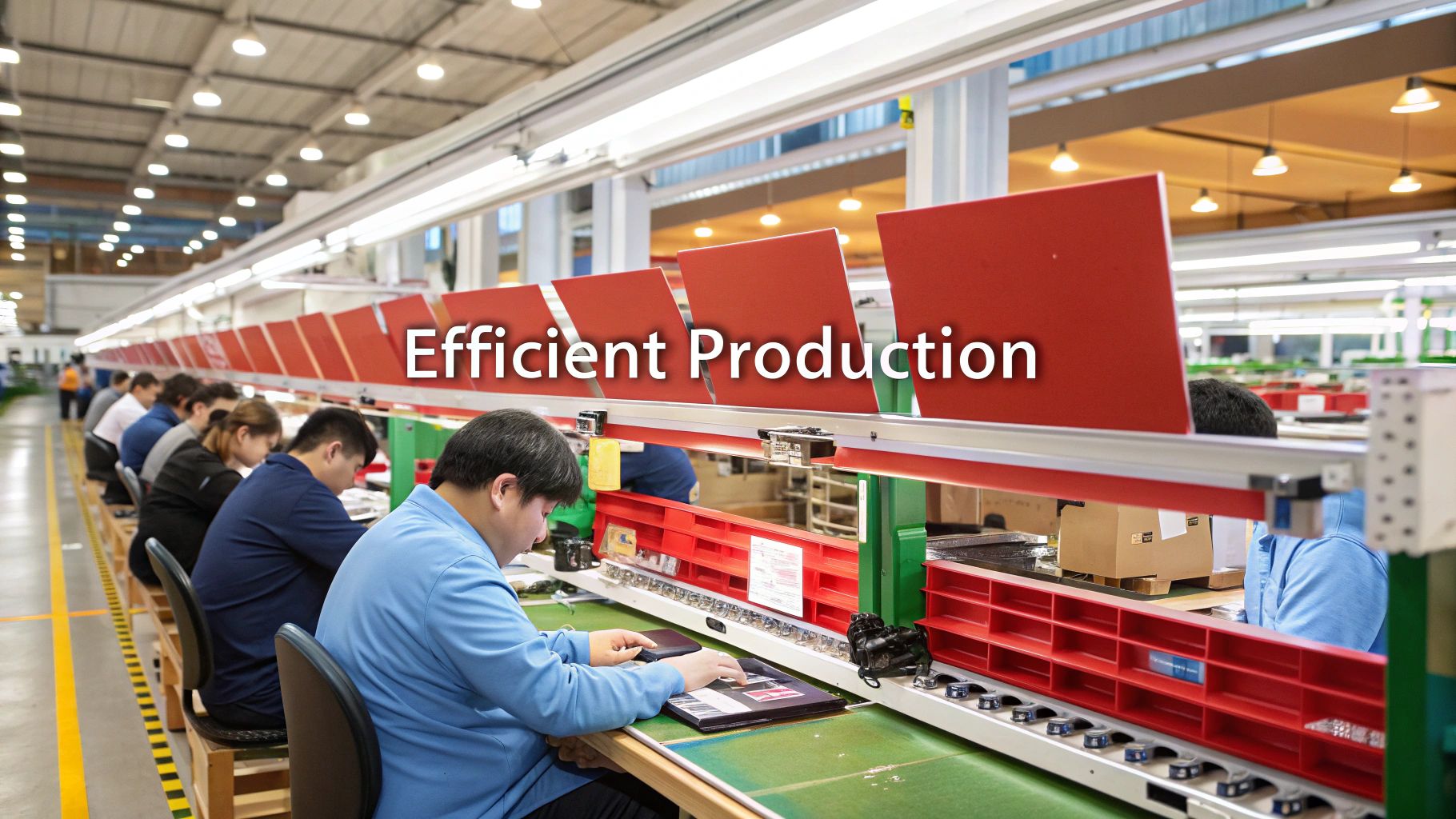
Quality control in electronics manufacturing goes beyond internal processes. It's about meeting external standards, which can feel daunting. But a strategic approach can transform these requirements from obstacles into advantages. This section explores key standards and offers practical advice for achieving certification while genuinely improving your quality processes.
Decoding the Alphabet Soup of Standards
The electronics manufacturing industry operates within a complex network of standards. ISO 9001 is a core standard, defining the requirements for a quality management system. It provides a framework for consistent quality across operations.
Industry-specific standards also exist, building upon ISO 9001. These include standards for medical devices (ISO 13485), automotive (IATF 16949), and aerospace (AS9100). Each adds requirements tailored to the field's unique challenges. For example, medical devices require strict traceability and risk management, while the automotive sector emphasizes supply chain strength.
Understanding applicable standards is the first step toward compliance. This allows for efficient resource allocation and the development of a comprehensive quality management system. Interestingly, compliance offers significant business benefits.
According to the ISO Survey, electronics manufacturers with ISO 9001 certification experience 27% fewer customer complaints and 23% lower costs associated with quality failures. This demonstrates the positive impact of quality standards on profitability and customer satisfaction.
Practical Approaches to Certification
Certification doesn't have to be overly complex. Focus on building a quality management system that truly enhances your processes, not just one that satisfies auditors.
This involves clear documentation, effective team training, and systems for monitoring and continuous improvement. Your documentation should be a practical guide for your team. A practical system ensures efficient operations and consistent quality, making compliance a natural outcome. Read also: How to master promotional electronic product sourcing.
Turning Compliance into a Competitive Advantage
Meeting quality standards can set you apart in a competitive market. It shows customers your commitment to quality and reliability. This is especially crucial in industries with high safety and performance expectations, such as medical and aerospace.
A robust quality management system improves efficiency, reduces waste, and minimizes the cost of quality failures. These improvements boost profitability and provide a competitive edge. Certification also simplifies bidding on contracts requiring compliance with specific standards, saving you time and resources.
By viewing quality standards as blueprints for excellence, electronics manufacturers can build systems that ensure compliance and elevate overall performance. This proactive approach reduces the stress of audits and positions companies for lasting success.
Turning Failures Into Quality Breakthroughs
Even with the most stringent quality control measures in electronics manufacturing, failures can still happen. This is where failure analysis plays a vital role. It shifts the perspective from simply reacting to problems to proactively preventing them. Instead of seeing failures as roadblocks, leading manufacturers use them as valuable learning experiences.
Building Effective Failure Analysis Teams
Effectively addressing failures begins with assembling the right team. Cross-functional teams, comprising members from design, engineering, production, and quality control, offer diverse insights. This collaborative approach helps pinpoint the root causes of failures, rather than just addressing surface-level symptoms.
For instance, if a set of circuit boards fails testing, the team might explore various potential causes. These could include design flaws, inconsistencies in materials, or equipment malfunctions. This comprehensive approach is essential for developing effective solutions.
Utilizing Tools and Methodologies
Failure analysis utilizes a variety of tools and methodologies. Visual inspection and microscopy are often the initial steps, allowing teams to identify visible defects. More advanced techniques, such as X-ray imaging and chemical analysis, can uncover hidden failure modes.
This in-depth exploration of the reasons behind failures provides crucial data for process improvement. For example, if X-ray analysis reveals solder joint fatigue, it might indicate problems with the soldering temperature profile.
The Power of Structured Processes
A structured failure analysis process is essential. This typically involves a systematic, step-by-step approach. It starts with defining the problem, gathering data, analyzing potential causes, and implementing corrective actions.
This methodical approach ensures thorough investigation and addresses the root cause of the issue. This increases the likelihood of effective solutions and prevents recurring problems. Research published in the Journal of Electronics Manufacturing indicates that implementing structured failure analysis processes can lead to a 62% improvement in first-pass manufacturing yield and reduce recurring defects by up to 78%.
Real-World Case Studies: Learning From Experience
Real-world case studies offer practical insights into how failure analysis drives improvement. Consider a scenario where a manufacturer encountered a high rate of component failures in a new product. Through failure analysis, they discovered that the components weren't sufficiently protected during shipping.
This discovery resulted in improved packaging and handling procedures, significantly reducing failures. Similarly, understanding best practices in electronic product sourcing can prevent issues further upstream. More information can be found at How to master promotional electronic product sourcing. These examples demonstrate how systematically addressing failures can dramatically improve quality and reliability.
Driving Continuous Improvement
Failure analysis isn't a one-time fix; it's an ongoing process. By consistently analyzing failures and implementing corrective actions, manufacturers establish a cycle of continuous improvement. This proactive approach minimizes the chance of future failures and fosters a culture of quality across the organization. This emphasis on learning from mistakes empowers manufacturers to stay at the forefront of their industry and deliver consistently high-quality electronics.
Creating a Quality Culture That Actually Sticks
Systems and technologies are crucial for quality control in electronics manufacturing. But they're only one piece of the puzzle. The real secret to lasting quality excellence? Your people. This section explores how top electronics manufacturers build a culture where quality is everyone's job, not just the responsibility of one department.
Training That Transforms Behavior
Effective training is more than just checking boxes. It's about building a deep understanding of quality principles and how they relate to each person's role. This means hands-on training, real-world examples, and chances for employees to practice. For example, training could include simulations of typical production line situations. This lets employees find and fix potential quality issues in a safe environment. This practical approach turns abstract ideas into concrete actions.
Building Buy-In for Quality Initiatives
New quality initiatives often face resistance. Getting past this requires clear communication. It means showing the value of the changes and actively involving employees in the process. This might involve workshops to get feedback on proposed changes. Proactively addressing concerns and celebrating early wins helps build momentum. When employees feel heard and valued, they're more likely to accept new initiatives.
Incentive Structures That Actually Work
Rewarding quality performance can be very effective. The trick is to design incentives that reward real quality improvements, not just surface-level compliance. This might mean rewarding teams for lowering defect rates, improving process efficiency, or finding and addressing potential risks. Recognizing individual contributions to quality builds a sense of ownership and pride. For instance, highlighting an employee who proactively spotted a potential problem reinforces how important individual vigilance is.
Communication That Reinforces Quality Values
Regular communication about quality keeps it front and center. This means sharing quality metrics, celebrating successes, and discussing lessons learned from mistakes. This transparent approach keeps quality top of mind for everyone and encourages continuous improvement. Providing ways for employees to share ideas and suggestions for quality improvements creates shared responsibility. Regular team meetings focused on quality issues create a valuable space for open discussion and problem-solving.
Leadership That Walks the Talk
Leadership plays a vital role in shaping quality culture. Leaders must show a real commitment to quality through their actions, not just their words. This means actively taking part in quality improvement initiatives, visibly supporting quality teams, and holding everyone accountable for quality performance. Leaders who consistently prioritize quality set the standard for the whole organization. When employees see their leaders involved in quality control in electronics manufacturing, they understand its importance and are more likely to embrace it. This creates a positive feedback loop where quality becomes ingrained in the company culture.
Building a strong quality culture isn’t a quick fix, but a continuous journey. It takes ongoing investment in training, communication, and leadership development. But the payoff is huge. A culture of quality encourages innovation, boosts efficiency, and improves customer satisfaction, creating a stronger, more competitive company.
The Future of Electronics Quality Control
Quality control in electronics manufacturing is a constantly evolving field. Staying ahead of the curve is essential for manufacturers looking to maintain a competitive edge. This section explores emerging trends reshaping quality control, from AI-driven defect detection to real-time data collection.
The Rise of Smart Quality
Artificial Intelligence (AI) is transforming quality control. AI algorithms analyze production line data, identifying patterns and anomalies that suggest potential quality issues. This allows for predictive maintenance, addressing problems before they cause defects, thus reducing downtime and waste. AI-powered visual inspection systems detect even microscopic flaws, exceeding human capabilities in speed and accuracy.
Internet of Things (IoT) sensors, embedded throughout production, provide a continuous stream of real-time data. This data offers unprecedented visibility into every manufacturing stage. Constant feedback enables immediate adjustments to prevent quality deviations, optimizing production and minimizing defects.
You might be interested in: How to master electronic finishing through advanced solutions.
Blockchain for Enhanced Traceability
Blockchain technology is revolutionizing supply chain verification. It creates a secure, tamper-proof record of each component's journey. This enhanced traceability simplifies defect source identification, streamlines recalls, and combats counterfeit components. This transparency builds customer trust and strengthens brand reputation.
From Reactive to Predictive Quality
Forward-thinking manufacturers use machine learning to anticipate quality issues. By analyzing historical data and real-time sensor input, machine learning models predict potential problems. This shift from reactive to predictive quality control significantly reduces costs and improves overall quality.
Evaluating and Implementing Emerging Technologies
Careful evaluation of new technologies is crucial. Some offer immediate benefits while others are still developing. Manufacturers should consider factors like implementation costs, integration complexity, and potential return on investment. A technology adoption roadmap ensures investments deliver tangible results.
The following table provides a brief overview of emerging QC technologies in the electronics manufacturing sector. It highlights their current adoption rates, projected growth, key benefits, and implementation challenges.
| Technology | Current Adoption Rate | Projected Growth | Primary Benefits | Implementation Challenges |
|---|---|---|---|---|
| AI-powered Defect Detection | Moderate | High | Increased Accuracy, Speed, and Efficiency | Integration Complexity, Data Requirements |
| IoT Sensors for Real-Time Data | Moderate | High | Improved Visibility, Proactive Monitoring | Data Security, System Compatibility |
| Blockchain for Supply Chain Verification | Low | High | Enhanced Traceability, Counterfeit Prevention | Scalability, Industry Standardization |
| Machine Learning for Predictive Quality | Low | High | Reduced Downtime, Proactive Problem Solving | Data Analysis Expertise, Model Development |
As shown in the table, while technologies like AI-powered defect detection and IoT sensors are seeing moderate adoption currently, all listed technologies are projected for high growth. This indicates the increasing importance of these advancements in the future of quality control.
Preparing for the future of quality systems requires continuous learning and adaptation. This includes employee training, new process development, and a culture of innovation. By staying ahead of the curve, electronics manufacturers can leverage these advancements, ensuring high-quality products.
Ready to elevate your brand with high-quality, custom-branded electronics? Explore Electronic Finishing Solutions and discover how we can help.


